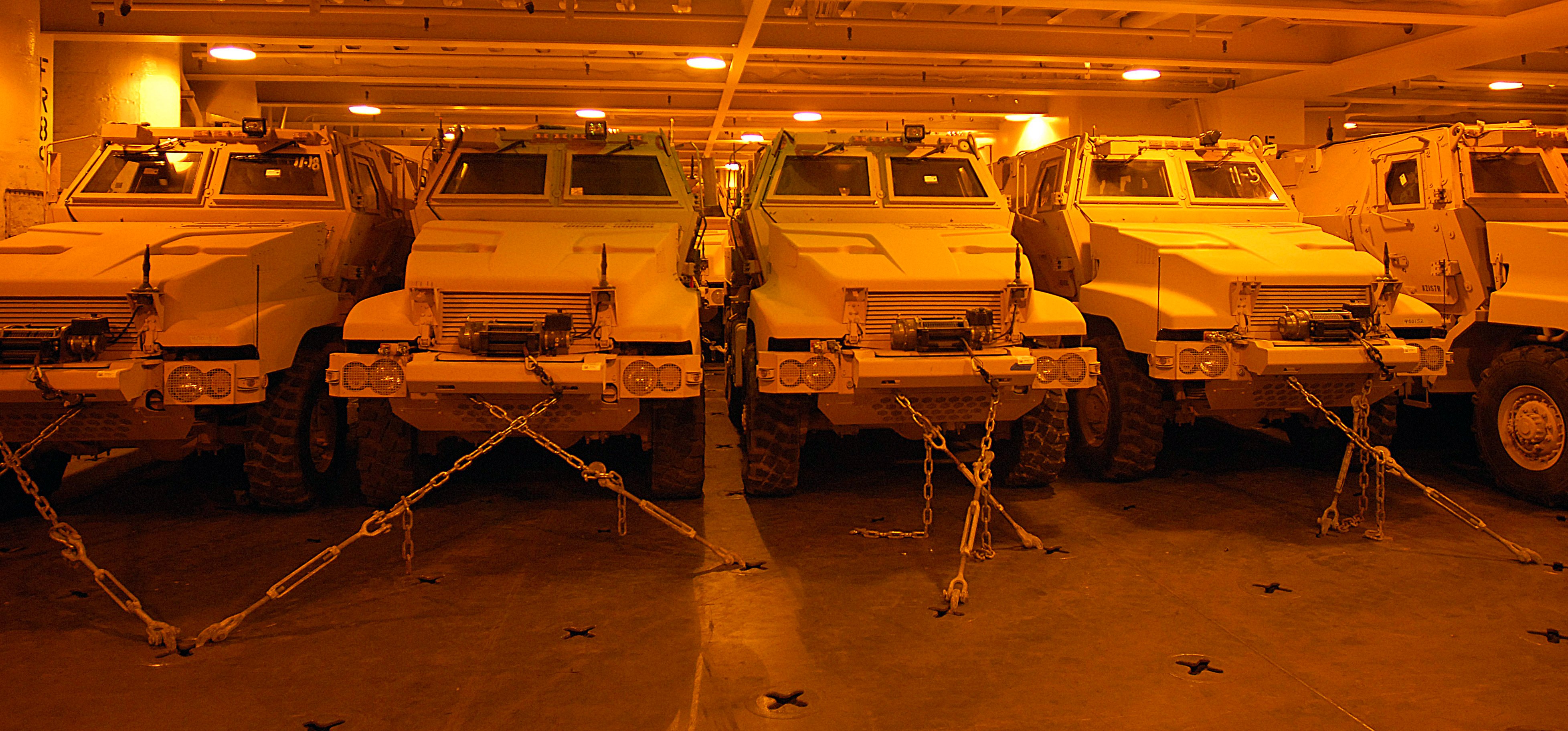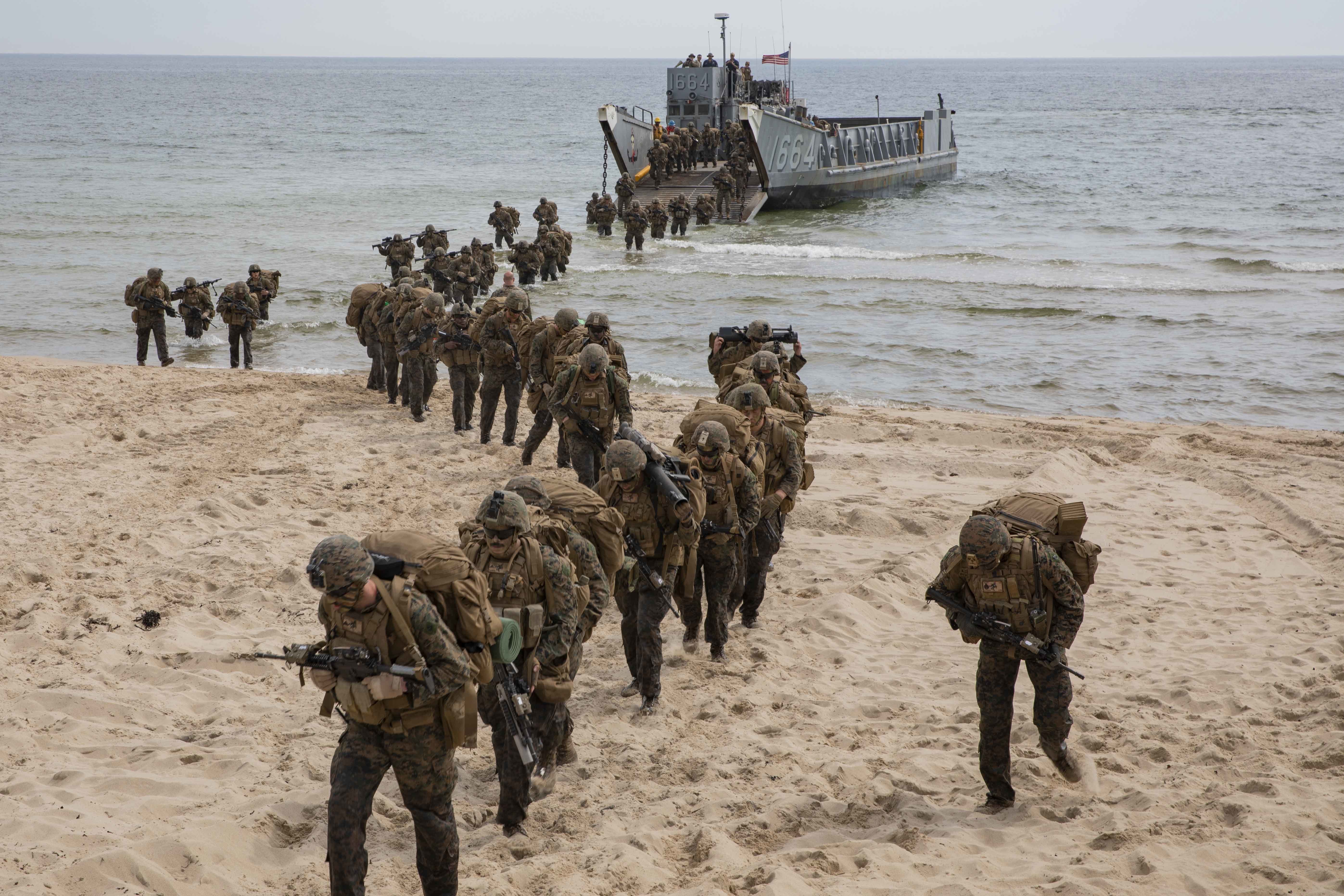
WASHINGTON, D.C. – Commandant of the Marine Corps Gen. David Berger previewed a shift in focus for the Marine Corps soon after taking over the job this summer, with his Commandant’s Planning Guidance. Now, he’s previewing what that shift will mean for the gear the Marines use and how they spend their money, writing in an essay in War on the Rocks that the service is over-invested in gear to support traditional land wars and under-invested in naval expeditionary capabilities.
Berger began his Dec. 5 essay by writing, “The Marine Corps is not optimized to meet the bold demands of the National Defense Strategy. While our ranks are filled with phenomenal marines — warriors who are smarter and more adaptable than ever — the design of our force, how we organize for combat, our equipment, and our warfighting capabilities, are no longer aligned to the potential adversaries America faces. My number-one priority as commandant of the Marine Corps is to design a force suited to the reality of the pacing threat as prescribed by the National Defense Strategy.”
The force Berger seeks to build will be optimized “for naval expeditionary warfare in actively contested spaces. It will be purpose-built to facilitate sea denial and assured access in support of fleet and joint operations. As we continue to explore design options through wargames supported by independently verifiable analysis, now is a good time to share some of the initial observations and assumptions behind our efforts, the hypotheses we seek to validate, and the preliminary conclusions we have reached on investments and divestments. I expect to release the first results of our force design effort this spring,” he continued.

The Marine Corps is actively engaged in a range of wargaming, modeling and simulation, live experimentation and more to finesse its idea of what tools it needs for future operations and what should be included in its upcoming Fiscal Year 2021 budget request. Without getting into specific budget line items, Berger laid out a clear set of priorities for the service: unmanned vehicles to deliver lethal effects by air, to deliver logistics in all domains and to move Marines around on the ground; mobile artillery and long-range precision fires, to include anti-ship missiles; mobile air defense systems, including directed energy systems; offensive electronic warfare capabilities and defensive signature management capabilities; mines; and more.
Lt. Gen. Eric Smith, the deputy commandant for combat development and integration who will be largely in charge of implementing the changes Berger has previewed, told reporters Dec. 5 after speaking at the U.S. Naval Institute’s Defense Forum Washington that much of what the Marine Corps is driving at is survivability within the weapons engagement zone of an adversary like China, and the ability to impose cost and confusion on a high-end adversary like China.
Recent experimentation has including converting 11-meter rigid-hull inflatable boats (RHIBs) to operate autonomously, and then using them to launch rockets or swarming unmanned aerial vehicles. From there, the autonomous technology could be applied to an LCM-8 Mike Boat, about double the length of the 11-meter RHIB, or the even larger landing craft utilities (LCUs). Some of these unmanned connectors might be used in theater to move goods around to maneuvering Marines. Some may be used to fire weapons or launch drones.
“What we’re trying to do for the adversary: what’s on this vessel? What’s on this vessel? If it’s sitting in a conex box, let’s say, you don’t know what’s in the conex box; it might be cargo, it might be something that’s lethal. And if you’re having to target every single small surface combatant that’s out there, every small surface connector that’s out there, that’s a lot of missiles,” Smith said.
“It is cost-imposition on any threat, be it North Korea or China or Russia or Iran, you pick the threat. If what is in any connector is possibly lethal to you, have fun targeting that. That’s what we’re working on.”

Smith said he’s very interested in a long-range unmanned surface vehicle (LRUSV) that would be used for logistics and decoy purposes, but Congress isn’t onboard yet and has blocked funding. Though he called LRUSV a top priority, he also noted that an autonomous LCU would also be a very powerful tool for the Marines to develop. It can haul 110 tons and travel 1,000 miles, he explained.
“That is a very very risk-worthy, viable platform, and it also looks like every other vessel bouncing around in the South China Sea once you put lights and nets all over it,” the general added.
Still, with the Marine Corps expecting flat or declining budgets, the smallest service won’t have money to keep doing what it’s doing today and invest in these new technologies.
“I need to invest in these things to be relevant in a fight with a peer competitor: better logistics, ground-based anti-ship missiles, better cyber, more resilient cyber. All these things, I need. A long-range, lethal, unmanned platform. To get there, I’m required to come up with new money. The top line’s not changing, and what you heard today is steady or declining budgets. So I have to divest of things; it’s not that they’re not of use, it’s that they are not of as great a use as these things.”
In Berger’s essay, he included a list of areas where the Marine Corps had over-invested in capabilities or capacities that were meant to support traditional ground wars. Those include: manned anti-armor ground and aviation platforms; manned ground transportation; manned ground reconnaissance; short-range mortar systems lacking necessary precision, range and lethality; traditional towed-artillery that cannot be modified for potential high-velocity projectile use; non-lethal UAVs; and exquisite systems that the service won’t be able to afford to man and sustain in the long-term, among others.
The Fiscal Year 2021 budget request, due out in February, might show the first evidence of investments and divestments to support the National Defense Strategy, though much of the FY2021 planning had already been done before Berger assumed his office and released his guidance. FY 2022 and later will likely reflect the bulk of these changes.

Still, planning for this future force is in full swing, with an eye towards near- and mid-term threats the service will face at sea and ashore.
“Our force design team made the following assumptions. First, forward bases and legacy infrastructure within the adversary’s weapons engagement zone are now extremely vulnerable. Second, large ships and those with large electronic, acoustic, or optical signatures are highly vulnerable within the weapons engagement zone, and to an increasing degree, immediately outside it. Third, adversary missile and air forces are optimized for the anti-ship fight,” Berger wrote.
“Fourth, while sea control or denial has traditionally been the exclusive domain of afloat naval forces, ground-based long-range precision fires and missiles are increasingly capable of affecting maritime operations. Finally, sub-surface naval capabilities will continue to have a decisive advantage over surface capabilities.”





